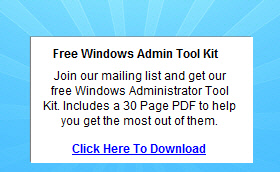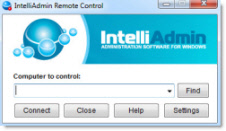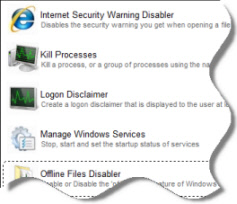Write Protected Drive
I am running Windows 7 Pro x64, which I have recently reinstalled due to my system drive dying irrecoverably recently. Since reinstalling I have been experiencing a problem where I am given error messages such as "Access is denied", etc when trying to write a file. This happens sometimes on my RAID 5 drive which I use as a secondary drive (three 500GB SATA drives set up into a RAID 5 for 1TB of disk space, using MB drivers for RAID), and sometimes on my system disk (320 GB disk just bought when my other drive failed) which is set up in a single disk JBOD (because of RAID setup limitations). I have attempted each and every possible solution for that I have found, most relevantly from this post: http://social.technet.microsoft.com/Forums/en/itprovistasetup/thread/c6c6edc0-f7e4-42f1-a376-cfad751f2357 I have tried the diskpart, and the "fsutil resource setautoreset true x:\", neither of which give errors (they both say they completed successfully) but don't actually help. I have only tried the "fsutil volume dismount x:\" on my system drive (resulting in an "Error: Access is denied") due to the fact that since finding that suggestion I have not had my secondary (RAID) drive lock up. The next time it does, I will attempt that solution and give feedback on it here. I had Windows 7 RC installed at least half a year ago and it had similar issues, though it only affected the RAID drive. I installed Windows 7 Pro (the release) in August when I got it from the MSDNAA program, and it had not shown any of these problems until I had to reinstall due to my old system disk dying. My system is custom built, the motherboard is a Foxconn A7DA-S. I have a multi-core (can't remember atm if it's dual or quad) Phenom processor by AMD. I have 8 GB of RAM installed. I believe all drivers are current. If you need more information please ask. This issue is becoming increasingly difficult to live with and I would like to get it resolved as soon as possible.
December 13th, 2009 7:42am
Hello,Do you Run the CMD as administrator before perform the command line "fsutil resource setautoreset true x:\"?Does the error occurs randomly when trying to write a file? If the problem happens in a Special file or folder, I recommend you try the following steps:
Take ownership of the folder or file
===============1. Right-click the folder or file which you want to take ownership of and click "Properties".2. In the "Security" tab, click the "Edit" button. If you are prompted for an administrator password or confirmation, type the password or provide confirmation.
3. Click "Add", and then type the name of the user (e.g. Administrators) to whom you want to give access to the drive or folder.
4. Click "OK" to accept the changes.5. Repeat the above steps with the other hard drives.
Reset Permission
============
1. Please download the subinacl.msi file from the following link and save the installation patch on the Desktop:
http://www.microsoft.com/downloads/details.aspx?FamilyID=e8ba3e56-d8fe-4a91-93cf-ed6985e3927b&displaylang=en#AffinityDownloads
2. Please go to the Desktop and double click the downloaded file.
3. Please select the C:\Windows\System32 folder as the Destination Folder during the installation. Later we will use this tool to reset the permission settings on the current machine.
Note: If UAC (User Account Control) window is prompted for permission to continue, please click "Continue".
4. Click "Start". In the Start Search bar, type: "notepad" (without quotes) and press Enter.
5. Copy the following commands and then paste them into the opened Notepad window:
@echo off
subinacl /subkeyreg HKEY_LOCAL_MACHINE /grant=administrators=f
subinacl /subkeyreg HKEY_CURRENT_USER /grant=administrators=f
subinacl /subkeyreg HKEY_CLASSES_ROOT /grant=administrators=f
subinacl /subdirectories %SystemDrive% /grant=administrators=f
subinacl /subdirectories %windir%\*.* /grant=administrators=f
subinacl /subkeyreg HKEY_LOCAL_MACHINE /grant=system=f
subinacl /subkeyreg HKEY_CURRENT_USER /grant=system=f
subinacl /subkeyreg HKEY_CLASSES_ROOT /grant=system=f
subinacl /subdirectories %SystemDrive% /grant=system=f
subinacl /subdirectories %windir%\*.* /grant=system=f
@Echo =========================
@Echo Finished.
@Echo =========================
@pause
6. After the above commands are finished, please close the Notepad window. Choose Save when you are prompted to save the file. Type "reset.bat" as the file name and choose Desktop from the left panel as the save location.
7. Refer to the Desktop and right click the reset.bat file, then choose "Run as administrator."
8. You will see a DOS-like window processing.
NOTE: It may take several minutes. When it is finished, you will be prompted with the message: "Finished, press any key to continue".
You can also log int the build-in administrator account and to see if the issue persists:
Using the Built-in Administrator
================================
1. Click the Start button->All Programs->Accessories.
2. Right click Command Prompt and select "Run as administrator".
3. Click Continue when the User Account Control window appears.
4. Copy the following command and press Enter:
net user administrator /active:yes
5. Restart the computer and then log into the computer by this Administrator account.
Thomas77
Free Windows Admin Tool Kit Click here and download it now
December 14th, 2009 12:18pm
I noticed that this prolem occurred after reinstalling the system. In geneal, "Access Denied" error can be related none-enough permissions or unaccessable destination. Besides Thomas_77's suggestions on checking permissions. I would like to propose the following suggestions additionally,1. Run chkdsk /f command to check hard disk error.2. Re-assign the drive letter. I assume that the hard disk driver letter may be messed up while switching between 500 GB SATA drive and 320 GB SATA drive. When you use the command line "fsutil volume dismount x:\", the x: drive letter may not correctly navigate to the volume. How to assign the drive letter===================
1) In Disk Management, right-click the volume, and then click Change Drive Letter and Paths. 2) Click Add, and then click Assign the following drive letter. 3) Select the drive letter that you want to use, and then click OK two times.Best RegardsDale
December 18th, 2009 1:10pm


